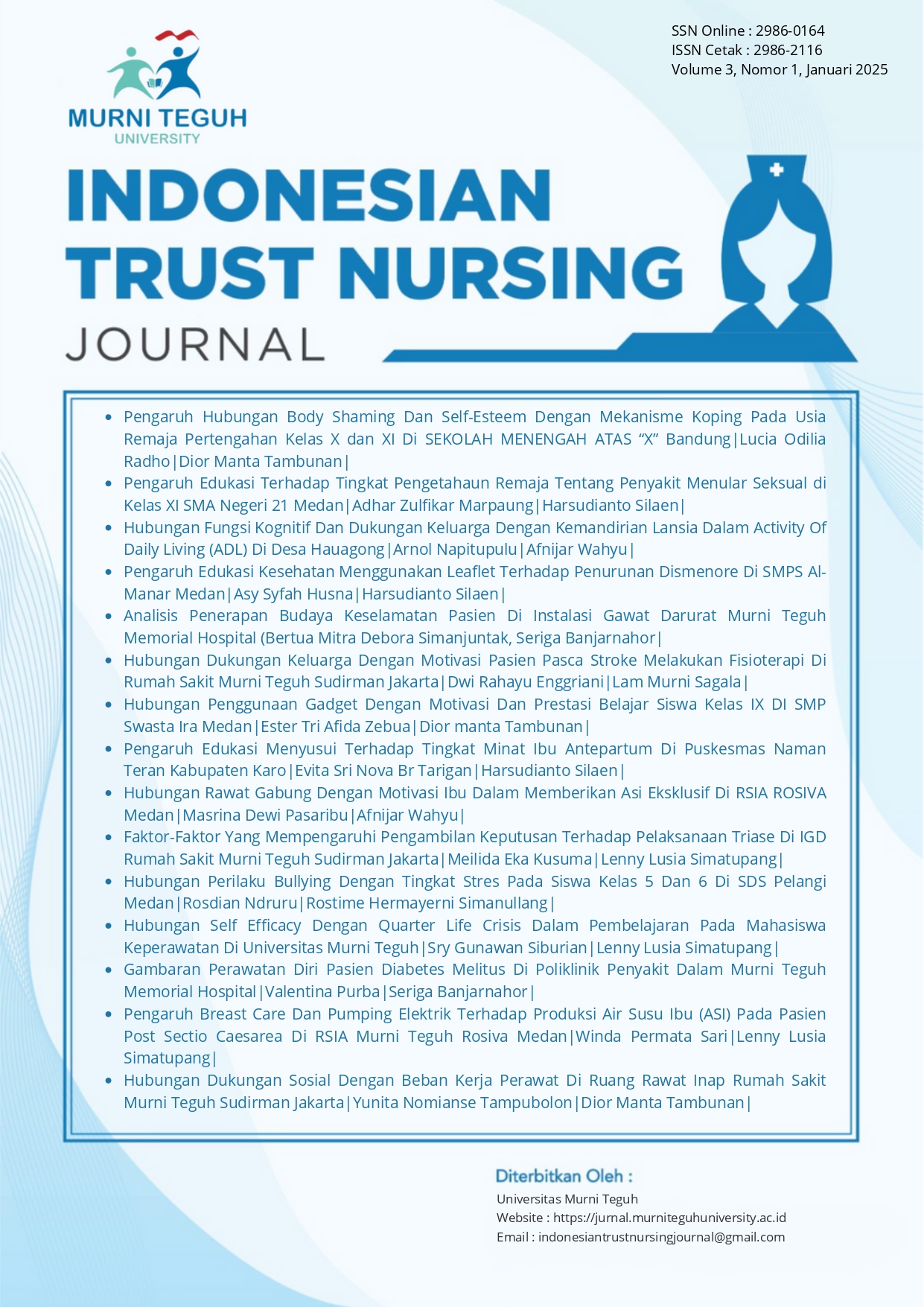Hubungan Rawat Gabung Dengan Motivasi Ibu Dalam Memberikan Asi Eksklusif Di RSIA ROSIVA Medan
Abstract
Exclusive breastfeeding for 6 months is not as easy as imagined. The coverage of exclusive
breastfeeding is still low because mothers feel that their breast milk is not enough or does not
come out in the first days of the baby's birth, working mothers, and feelings of anxiety about
feeling that their breast milk is not enough. Most mothers need support and encouragement in
the form of reliable information so that they can provide their breast milk properly. The objective
of this study is to determine the relationship between joint care and mothers' motivation to
provide exclusive breastfeeding. This study is a descriptive correlational study with a cross-
sectional design. This study will be conducted at RSIA Rosiva Medan. The population is 58
people and all of them are used as samples. Sampling is by accidental sampling. The data
used are primary data and secondary data. Data analysis was carried out univariately in a
frequency distribution table, and bivariate analysis using the Pearson test with a significance
level of = 0.05. The study showed that all respondents were 25-35 years old (100%), had a
high school education (77.1%), and were self-employed (58.3%). The majority of mothers were
treated in joint care (56.3%), and the majority of mothers had moderate motivation to provide
exclusive breastfeeding (50.0%). The Pearson test results obtained p-value = 0.000 (p <0.05)
meaning that there is a relationship between joint care and maternal motivation to provide
exclusive breastfeeding at RSIA Rosiva Medan. It is concluded that the motivation of mothers
to provide exclusive breastfeeding is because mothers are joint care with their babies. It is
recommended that further researchers conduct research on maternal motivation to provide
exclusive breastfeeding using other variables such as perception, family support, and health
worker support.
Copyright (c) 2025 Indonesian Trust Nursing Journal

This work is licensed under a Creative Commons Attribution-ShareAlike 4.0 International License.







